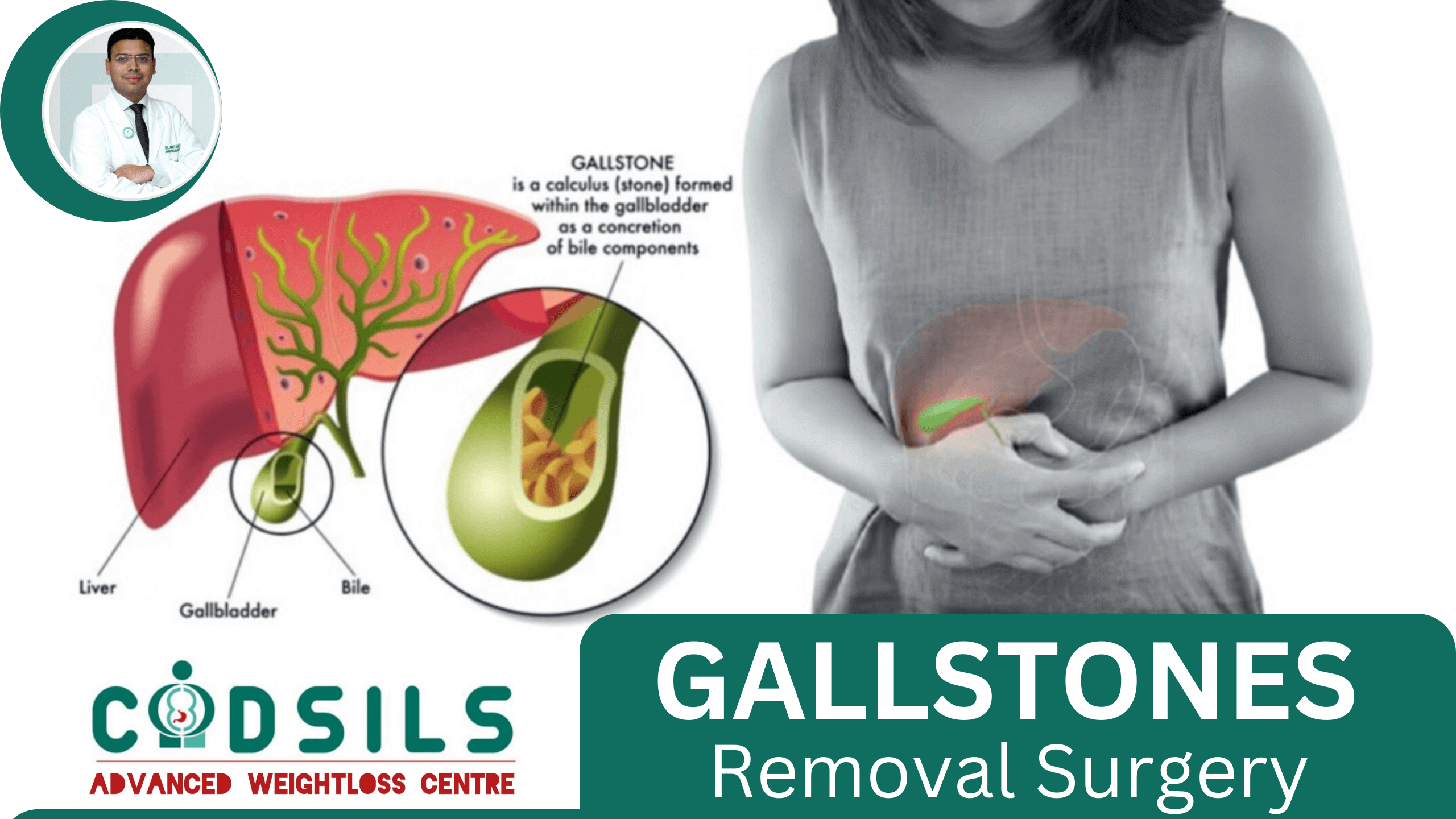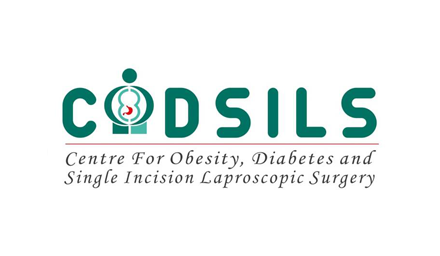
04 Nov Best Surgeon For Gallbladder Removal In Mohali Punjab
Cholecystectomy in Mohali, Punjab
A cholecystectomy is a surgical procedure designed to remove the gallbladder, a pear-shaped organ located just below the liver on the upper right side of the abdomen. The gallbladder’s main function is to collect and store a digestive fluid produced in the liver called bile.
Cholecystectomy is a relatively common surgical operation, known for its safety, and it typically carries a low risk of complications. In most cases, this surgery is performed using small incisions, allowing patients to return home on the same day.
There are two primary methods for performing a cholecystectomy:
- Laparoscopic Cholecystectomy: This is the most common approach. It involves making small incisions through which a tiny video camera and specialized tools are inserted. These instruments allow the surgeon to visualize the inside of the abdomen and safely remove the gallbladder.
- Open Cholecystectomy: In certain situations, a larger incision may be necessary to remove the gallbladder. This method is referred to as an open cholecystectomy and typically requires a longer hospital stay and recovery period.
The choice between these two approaches is determined by various factors, including the patient’s overall health, the severity of the gallbladder condition, and the surgeon’s judgment. Most patients can opt for the less invasive laparoscopic cholecystectomy, which offers quicker recovery and a shorter hospital stay. However, in specific cases, an open cholecystectomy may be necessary for a successful procedure.
Cholecystectomy is primarily employed to address issues related to gallstones and their associated complications. Your medical team may recommend a cholecystectomy if you have:
- Gallstones in the Gallbladder Causing Symptoms (Cholelithiasis): This surgery is often recommended when gallstones in the gallbladder lead to painful or problematic symptoms.
- Gallstones in the Bile Duct (Choledocholithiasis): When gallstones migrate from the gallbladder into the bile duct, causing blockages and other complications, cholecystectomy may be necessary.
- Gallbladder Inflammation (Cholecystitis): In cases of gallbladder inflammation, cholecystectomy is often performed to alleviate the condition.
- Large Gallbladder Polyps: When large polyps are identified in the gallbladder, they can pose a risk of developing into cancer. Cholecystectomy is recommended to prevent this potential complication.
- Pancreas Inflammation (Pancreatitis) Resulting from Gallstones: In situations where gallstones contribute to pancreas inflammation, cholecystectomy is a common course of action to prevent recurrent pancreatitis.
- Concern for Gallbladder Cancer: If there are concerns regarding the presence or development of gallbladder cancer, cholecystectomy may be recommended as a diagnostic and treatment measure.
Cholecystectomy is a well-established procedure for addressing these issues and can help alleviate symptoms, prevent complications, and improve the patient’s overall health and quality of life. Your healthcare provider will assess your specific condition and recommend cholecystectomy if it is deemed the most appropriate treatment option.
When undergoing a cholecystectomy, it’s important to be aware of potential risks and take necessary preparations. Here are some considerations:
Risks
A cholecystectomy, like any surgical procedure, carries a small risk of complications, which may include:
- Bile Leak: There is a slight risk of a bile leak, where bile may escape into the abdominal cavity instead of flowing through the bile duct as intended.
- Bleeding: While uncommon, there is a risk of bleeding during or after the surgery.
- Infection: Infections can occur at the surgical site, although this is relatively rare.
- Injury to Nearby Structures: During the procedure, there is a potential for unintentional injury to nearby structures, such as the bile duct, liver, or small intestine.
- General Anesthesia Risks: Undergoing general anesthesia carries its own set of risks, including the possibility of blood clots and pneumonia.
The specific risk factors for these complications depend on your overall health and the reason for your cholecystectomy.
Preparation
To prepare for a cholecystectomy, you may need to take the following steps:
Food and Medicines
- The night before your surgery, you will typically be asked to abstain from eating anything. You may be allowed to have a small sip of water with your prescribed medicines, but it’s important to avoid eating and drinking for at least four hours before the surgery.
- Inform your healthcare team about all the medications and supplements you are currently taking. In some cases, they may ask you to discontinue certain medications or supplements to reduce the risk of bleeding.
Clothing and Personal Items
- While most people can go home on the same day as their cholecystectomy, it’s wise to prepare for the possibility of staying overnight in the hospital due to unexpected complications. Bring personal items, such as a toothbrush, comfortable clothing, and reading materials like books or magazines to pass the time.
Other Precautions
- Arrange for a friend or family member to drive you home after the surgery and be available to assist you during the first night following the procedure. Having support and transportation readily available can be essential for a smoother recovery process.
By understanding the potential risks and making appropriate preparations, you can help ensure a safer and more comfortable experience when undergoing a cholecystectomy.
Here’s what you can expect before, during, and after a cholecystectomy
- A cholecystectomy is performed under general anesthesia, which means you will be unconscious during the surgery. Anesthesia medications are administered through a vein in your arm. A breathing tube may be placed down your throat to assist with breathing.
During the Procedure
- Depending on your specific case, your surgeon will choose one of two surgical approaches:
- Laparoscopic Cholecystectomy: Small incisions are made in your abdomen, and a tube with a tiny camera is inserted through one of these incisions. The surgeon uses this camera to view your gallbladder and other instruments inserted through the remaining incisions to remove it. This procedure typically takes 1 to 2 hours.
- Open Cholecystectomy: An incision, usually about 6 inches long, is made in your abdomen, below the ribs on the right side. The surgeon pulls back the muscle and tissue to access the liver and gallbladder, which is then removed. An open cholecystectomy also takes about 1 to 2 hours.
After the Procedure
- After the surgery, you’ll first go to a recovery area as the effects of anesthesia wear off. From there, you will be moved to a hospital room to continue your recovery. The duration of recovery depends on the type of procedure:
- Laparoscopic Cholecystectomy: Many people can go home on the same day as their surgery, but in some cases, a one-night hospital stay may be necessary. Typically, you can go home once you can eat and drink without pain and can walk unassisted. Full recovery usually takes about a week.
- Open Cholecystectomy: Expect to spend 2 to 3 days in the hospital. After returning home, it may take 4 to 6 weeks to fully recover.
Results
-
- A cholecystectomy can effectively alleviate the pain and discomfort caused by gallstones. While conservative treatments, like dietary changes, often can’t prevent the recurrence of gallstones, cholecystectomy is highly effective in preventing their return in most individuals.
- The removal of the gallbladder doesn’t significantly impact digestion for most people. The gallbladder is not essential for healthy digestion. Some individuals may experience occasional loose stool after the procedure, but this typically resolves over time.
- The timeline for returning to your usual activities after a cholecystectomy depends on the specific procedure used and your overall health:
- Laparoscopic Cholecystectomy: Many individuals can potentially return to work within 1 to 2 weeks.
- Open Cholecystectomy: Recovery may take a few weeks before returning to work is possible.
Your surgeon’s team will provide guidance on your post-operative care and activity restrictions, and they will monitor your progress throughout your recovery. It’s important to follow their instructions and attend any follow-up appointments to ensure a smooth and successful recovery.
Dr. Amit Garg, the Founder and Director of CODSILS, is widely recognized as one of the prominent figures in the fields of bariatric and advanced laparoscopic surgery. His reputation is a testament to his work in advanced laparoscopic and bariatric surgery and the remarkable level of expertise he brings to his profession. In 2014, he established CODSILS with a vision to provide world-class solutions for obesity and diabetes to patients. This vision has since flourished, expanding significantly over the years, and Dr. Amit Garg’s dedication continues to make a positive impact in these medical fields.
You can reach Dr Amit Garg – Best Laparoscopic Surgeon in Mohali via email atcodsils.info@gmail.comor call at helpline number +91 6283337650


